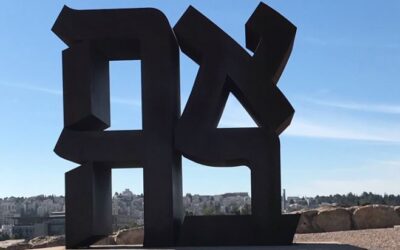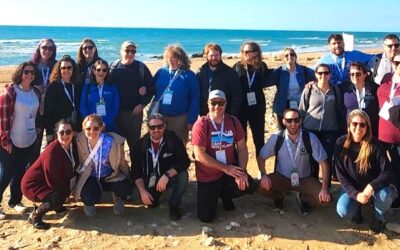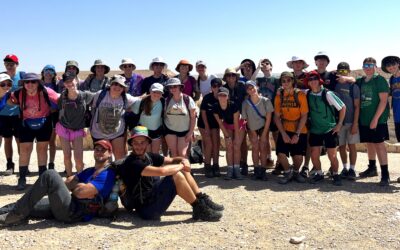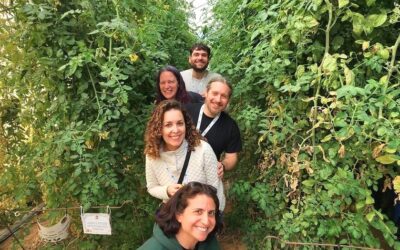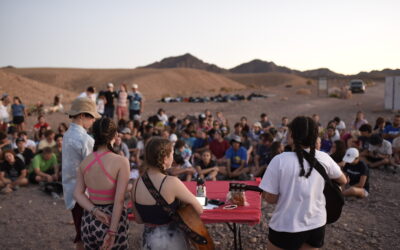By Daniel Goldberg, NFTY in Israel Participant, Bus 6
On Monday, July 9, our group ended a long day in the old city with a visit to the Kotel, also called the Western Wall. Already informed of its rich history by our group leaders, I could feel a sense of curiosity from the entire group as we were separated by gender at the security entrance. We were taught not only of its history as the last part of the second temple to remain standing, but also its spiritual value and symbolism to Jews across the world. We were also briefed about the differences between Orthodox and Reform Jews and the possible challenges that could result from that at the Wall. With all that in our minds, we embarked into the holy site.
As a person who identifies as male, I was separated to the left side of the wall. When we walked in together, we put on Kippot and were all offered to put on Tefillin. There was a clear feeling of uncertainty among the NFTY in Israel kids who had mostly never put on Tefillin before; however, a majority of males I was with chose to wear it. I too, personally chose to wear the Tefillin as an experience at the Wall to connect to a piece of Judaism that I hadn’t experienced before. With my hand against the hot stone that had stood there for over 2,000 years, I felt a physical connection to my spirituality. Learning about the Wall for years in both religious school and history class it felt surreal to finally be standing under it. Throughout our learning, it wasn’t possible for us to truly learn the feeling of being at the Wall until we were there ourselves, touching it and listening to the people around us.
I said a personal prayer in my head in English, but next to me were many Orthodox Jews bowing their heads as they said prayers in Hebrew in a rhythm unlike anything I had ever seen. Walking into the room next to the wall on the men’s side I saw about a hundred others praying in this same manner. For me and a few of my friends, this was a bit uncomfortable because we tend to express our Judaism in dramatically different ways; however, I did not mind them praying in the way that they did because we were able to pray peacefully side by side. It did feel a bit strange, though to have such a harsh binary between two groups of people who identify themselves under the same religion. Standing there in my Tefillin and Kippah as I watched the Orthodox Jews bow continuously at the Wall, it certainly did not feel the same as the singing and dancing at Eisner and NFTY during prayers.
Besides the Orthodox way of praying, the strangest part of it all for me was the gender separation. The men’s side was spacious and had a separate room for learning and praying, while the women’s side to the right of us was packed and significantly smaller. The women’s side also had chairs set out, unlike the men’s side, as if the women wouldn’t be strong enough to stand at the wall and pray for a long period of time like the men did. This not only felt sexist, but also gave me an uncomfortable feeling of privilege that I did not want to have. I also thought of my Jewish friends at home who don’t identify with male or female genders. Where would they go? Why is there a need for separation at a place that is meant to bring Jews together as one? I left the Wall lost in my own ambivalence. I had a really meaningful prayer experience and enjoyed trying the Tefillin. Physically touching the wall that I had heard so much about was an experience unlike any other. However, the separation between Reform and Orthodox Jews, as well as the physical separation between males and females at the Wall, was unsettling. It felt as though we had visited two of the most important places to learn about as Jews on this trip: Auschwitz-Birkenau and the Kotel. Both were incredible learning experiences and the NFTY in Israel program has allowed us to form our own educated opinion on complex situations such as the divisions that occur at the Kotel. I think we are all incredibly lucky to have been able to visit such amazing places so far and visiting these spiritual and historic places will give us context to future decisions and influence our morals.

